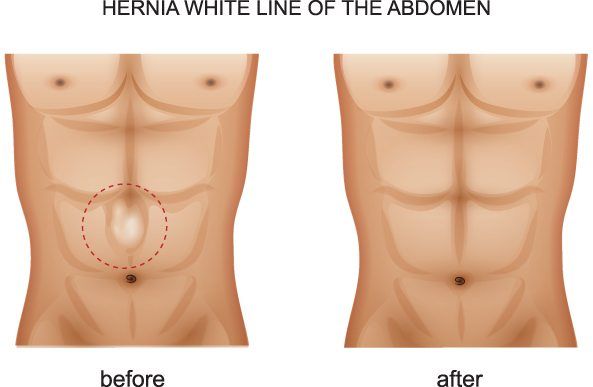Hernias

A hernia is the bulging of an organ through a tear in the tissue or muscle that is supposed to hold it in place. Most are found in the abdomen, however, they can also be found in the groin and even upper thigh area. Surgery is nearly always recommended to avoid further complications, such as strangulation, when the organ makes its way through the tear and blood supply is cut off.
Did you know?
Hernias are most common in men and can develop at any age. In fact, babies have been known to be born with hernias. When a baby is born with a hernia, it is usually fixed as soon as possible to avoid further complications while the baby grows. Strangulation is a particular risk for infants.
What are the symptoms of a hernia?
A hernia is usually pretty easy to spot, and although it can be diagnosed by oneself, it’s always important to get to the doctor as soon as possible. Hernias are characterized by bulging, swelling, or pain in the area in which they are present.
What are some of the most common hernias?
Incisional hernias occurs when the intestines bulge outside of the intestinal wall at a site where previous abdominal surgery was performed.
Umbilical hernias (belly button) are commonly seen in newborns and occur when the intestines bulge through the abdominal wall near the belly button.
Inguinal hernias (groin) can develop from a congenital issue or from continued strain of the abdominal wall due to routine heavy lifting.
Femoral Hernias ( groin/thigh) are another type of groin hernia, but occur lower in the body. They develop in the upper part of the thigh near the groin just below the inguinal ligament and can appear as a painful lump.
When will I know if I need surgery?
More often that not hernias are monitored to see if they progress. If the doctor notices a change in it, such as it growing or not resolving on its own, they will typically decide to perform surgery. More often than not the surgery will be done laparoscopically or with daVinci robotic surgery, to avoid large incisions. Oftentimes a mesh will be used to patch the area in which a hernia has occurred. Mesh offers the highest chance of success and decreases the probability of a recurrence.


